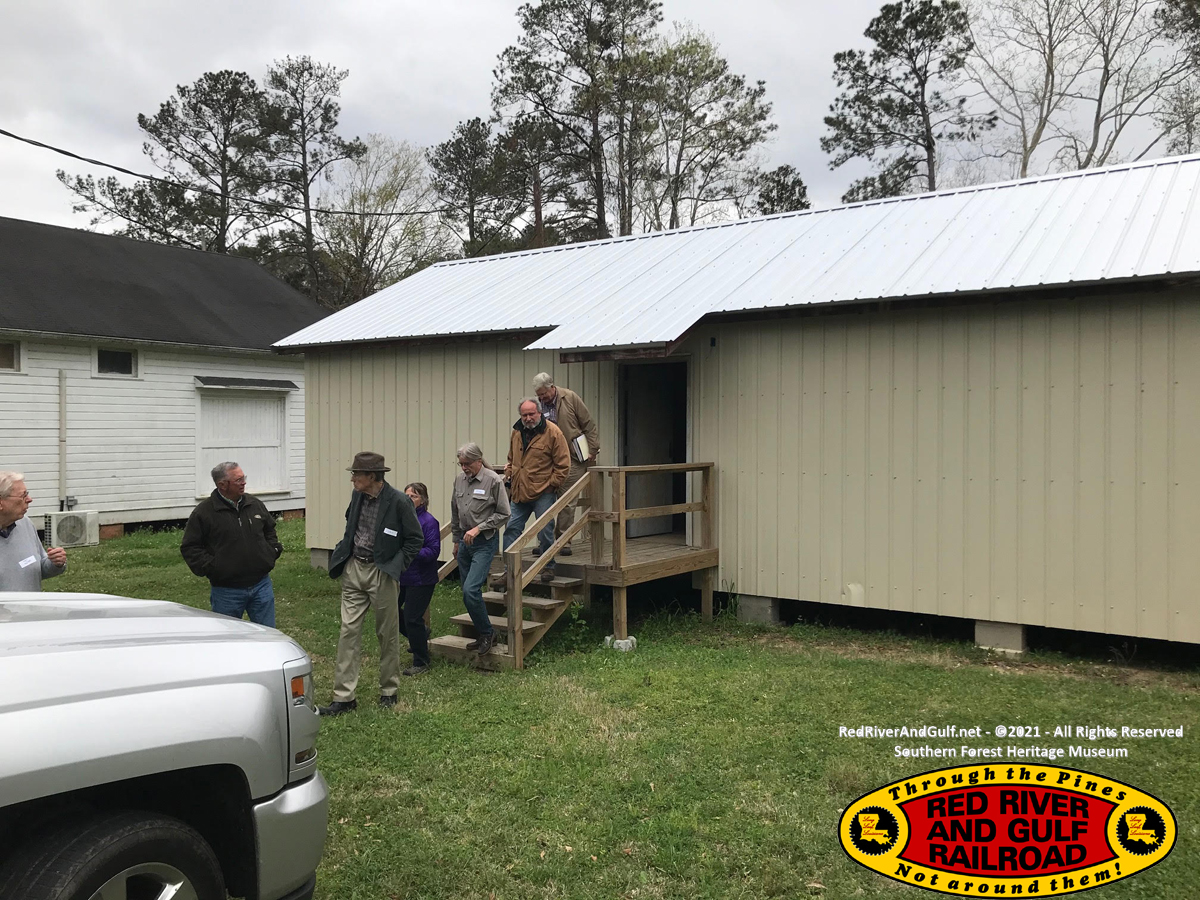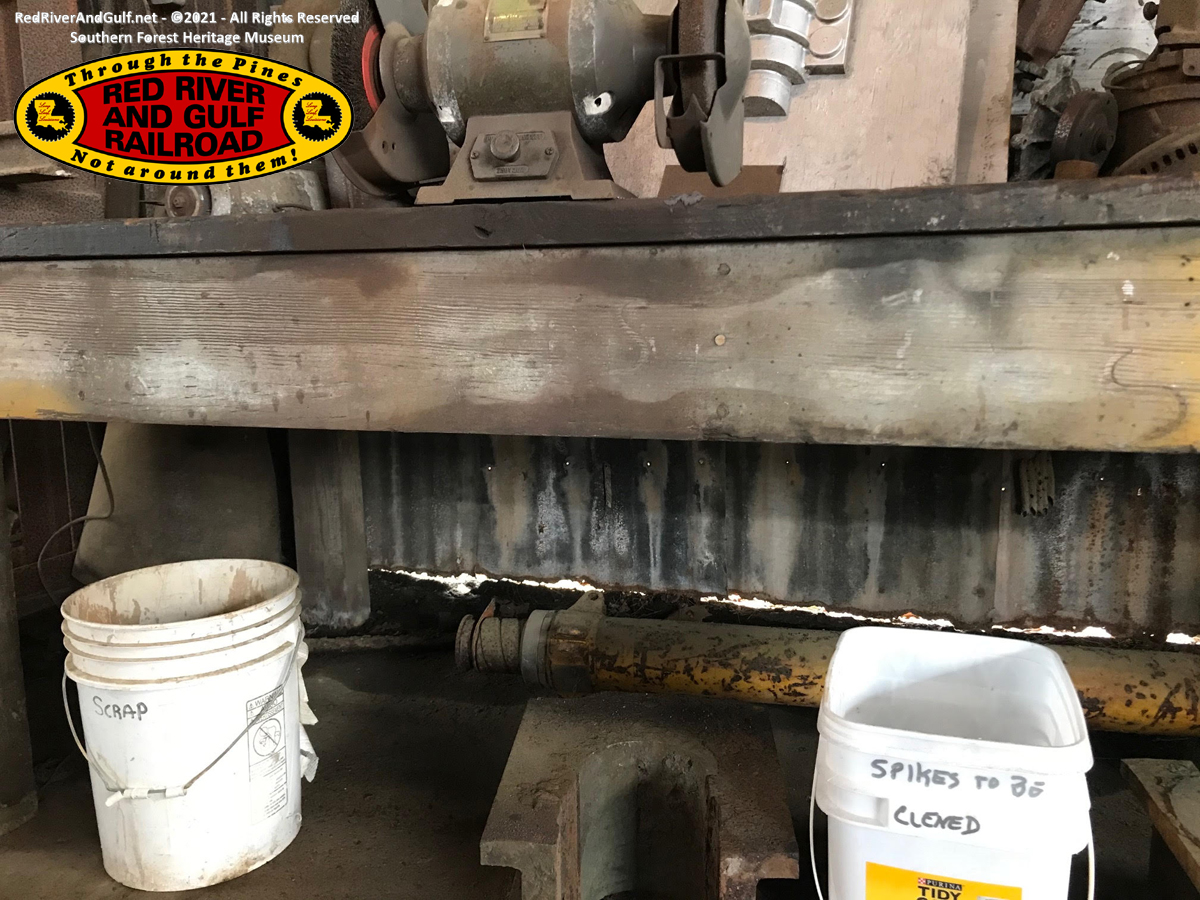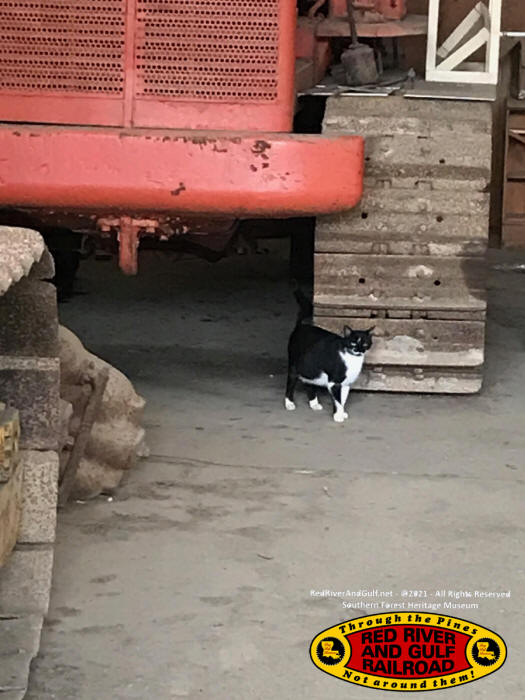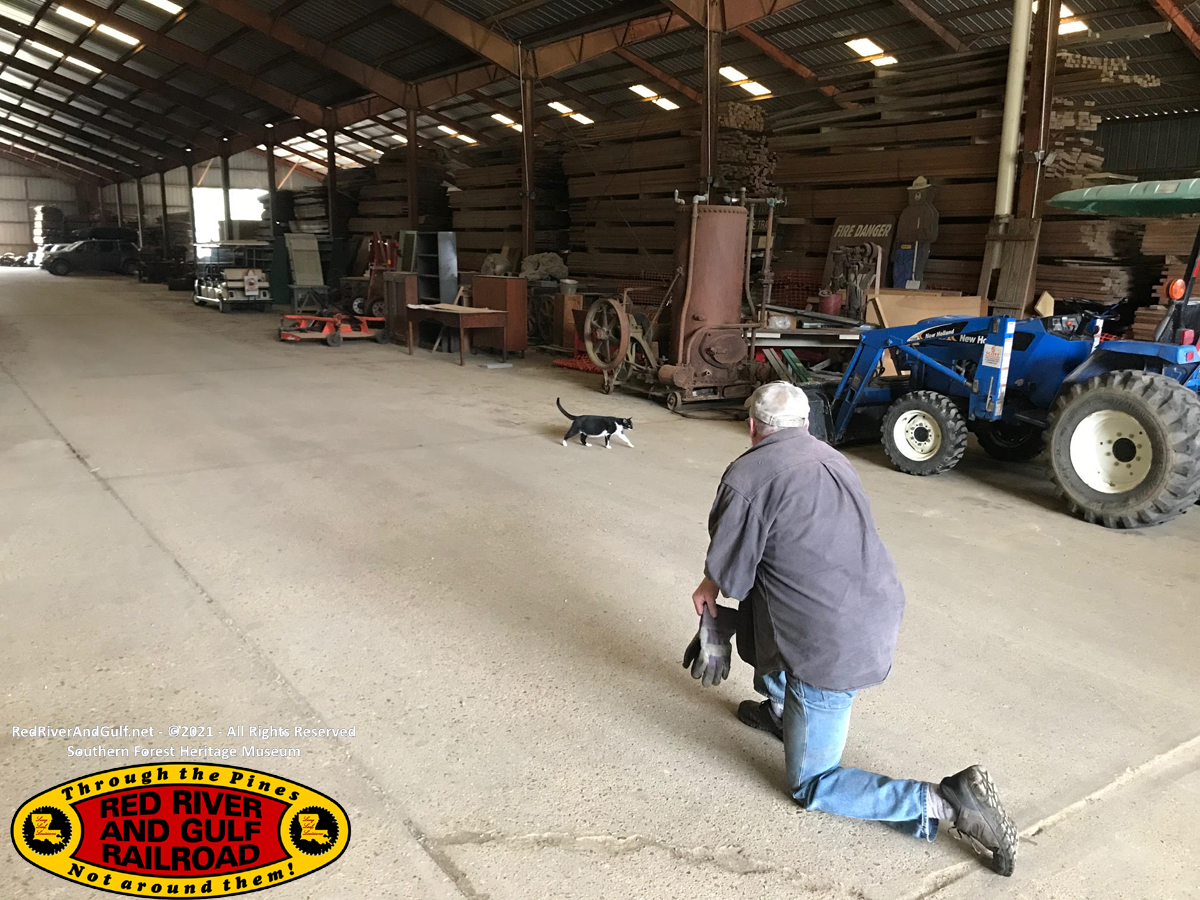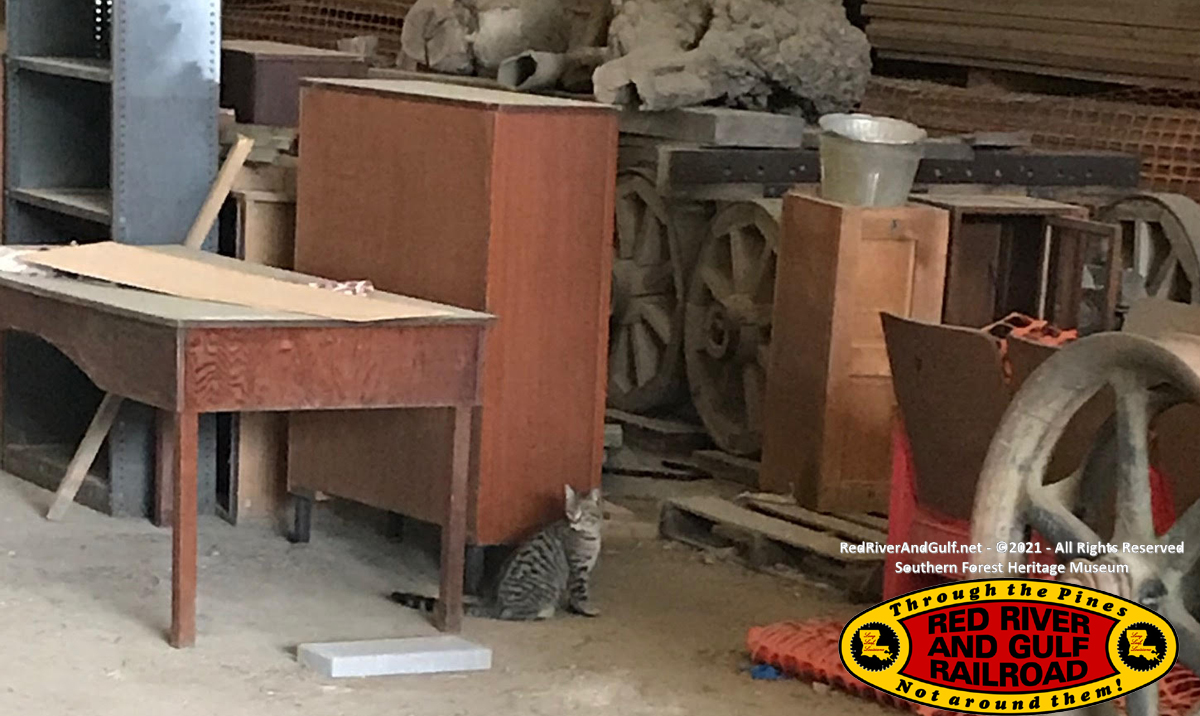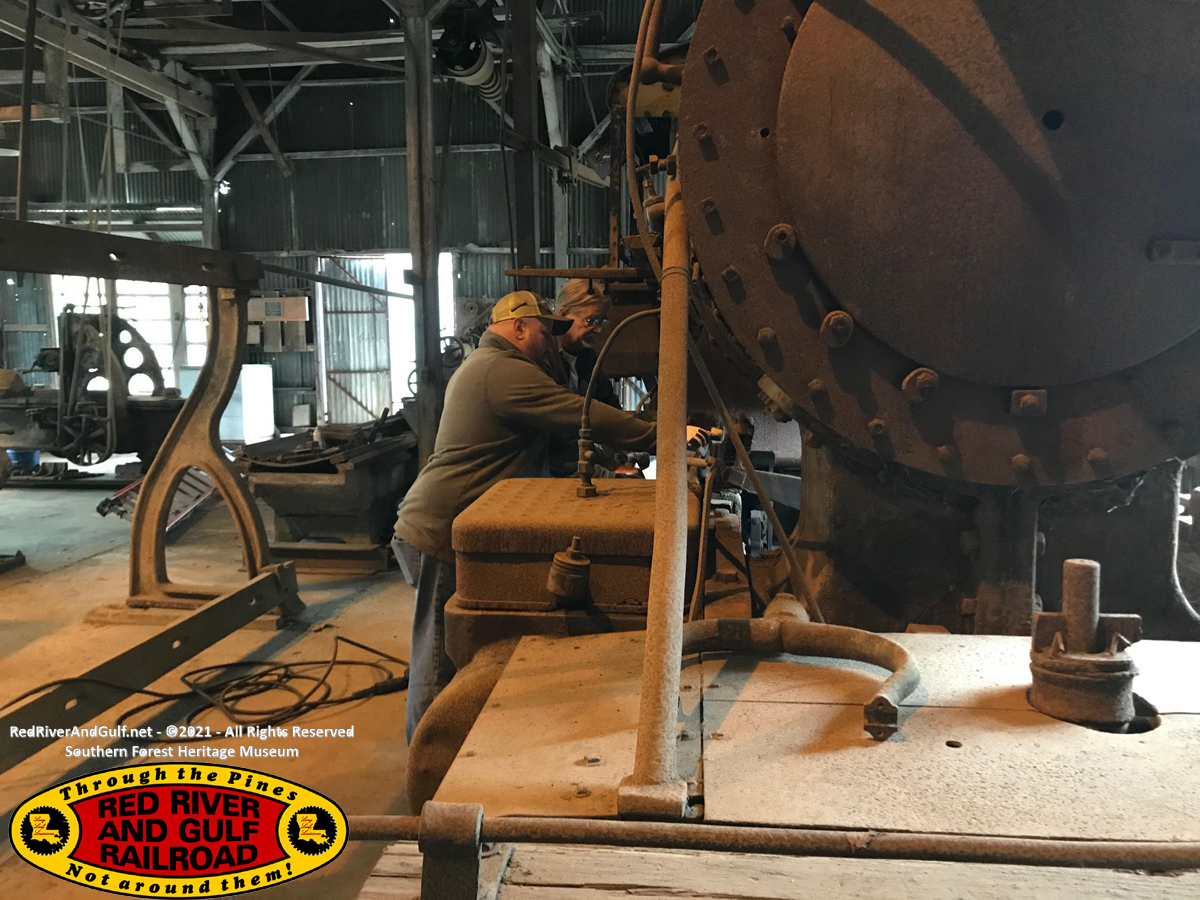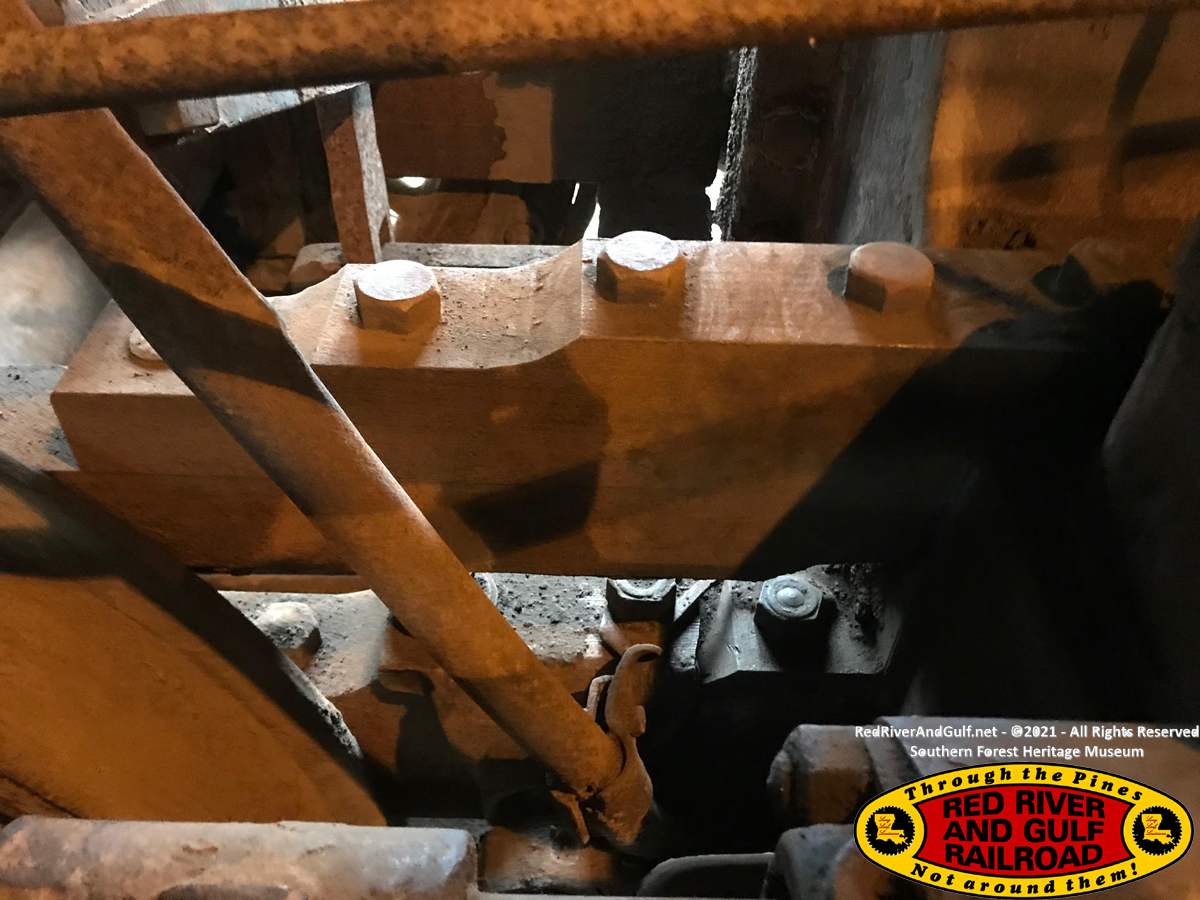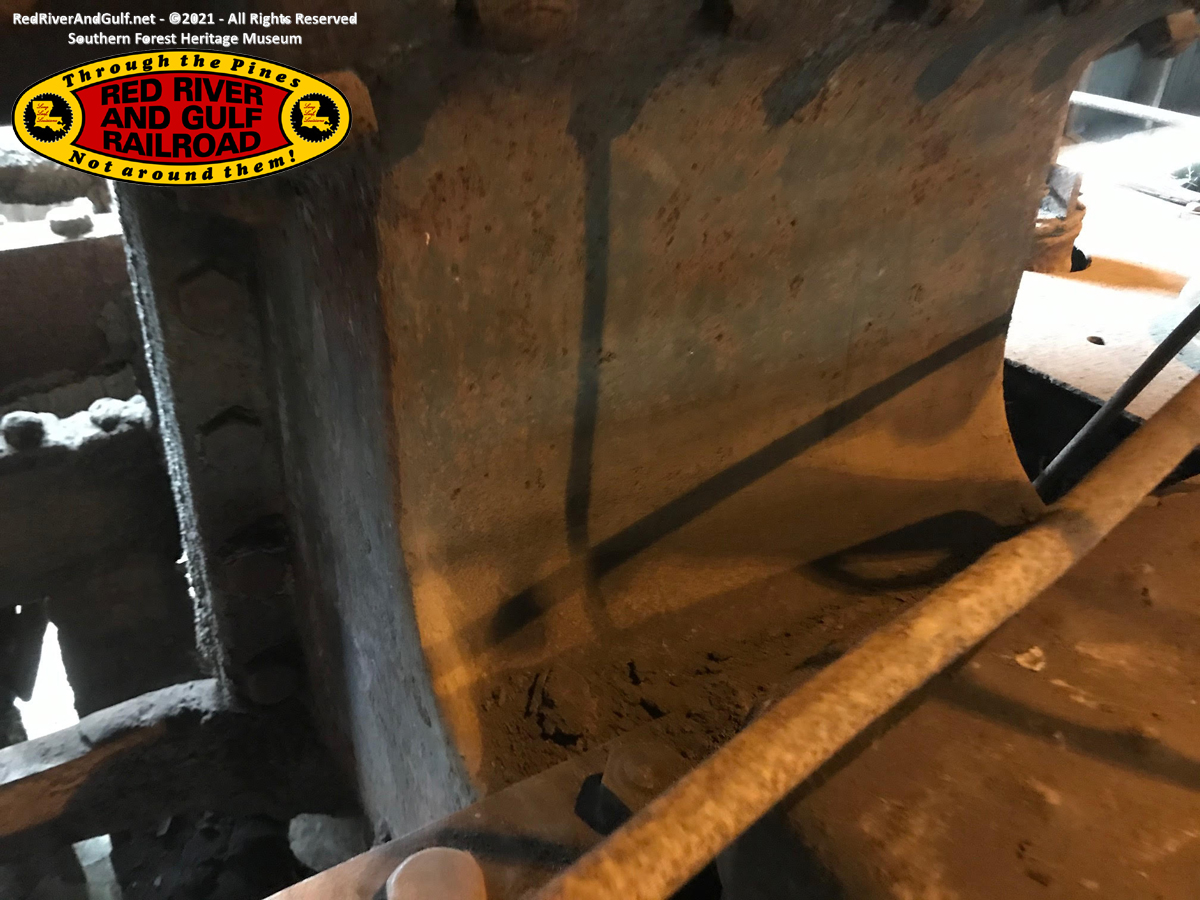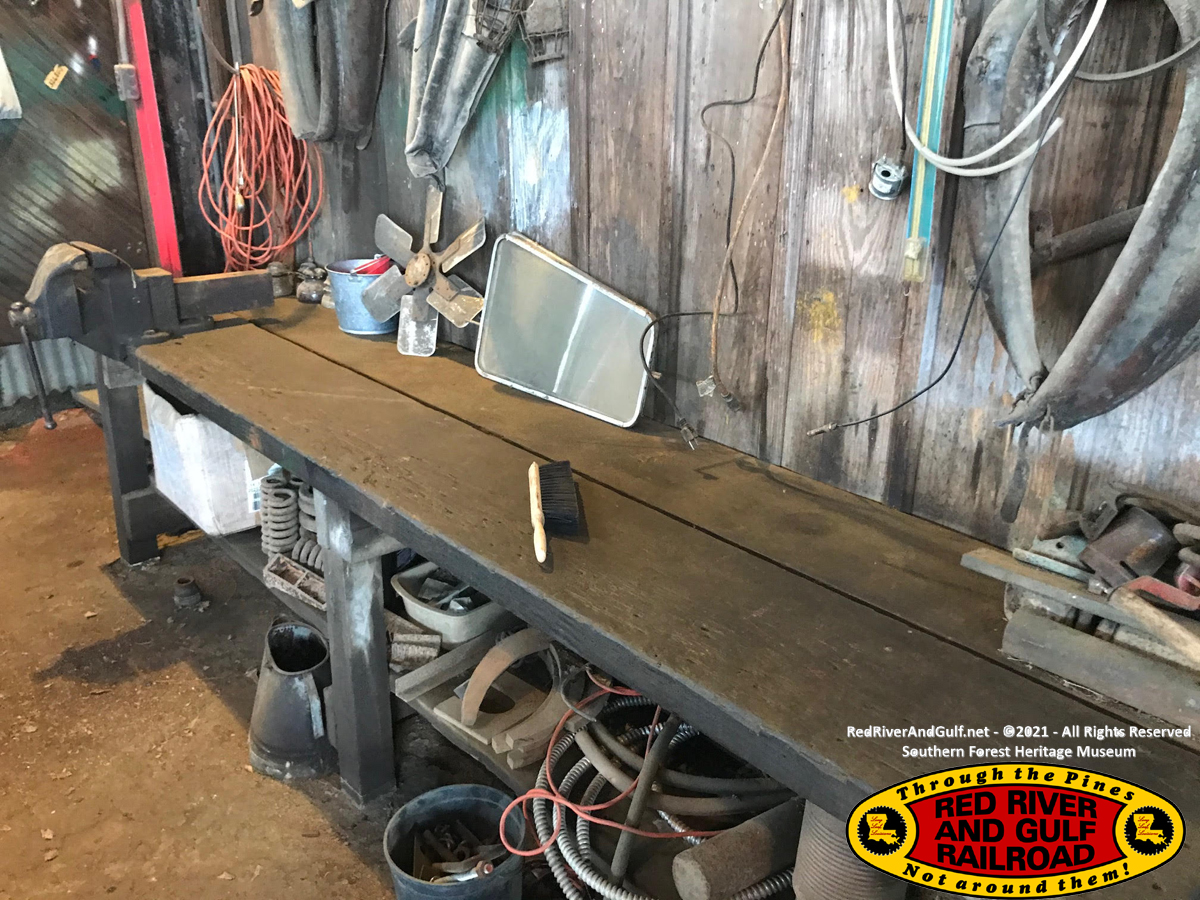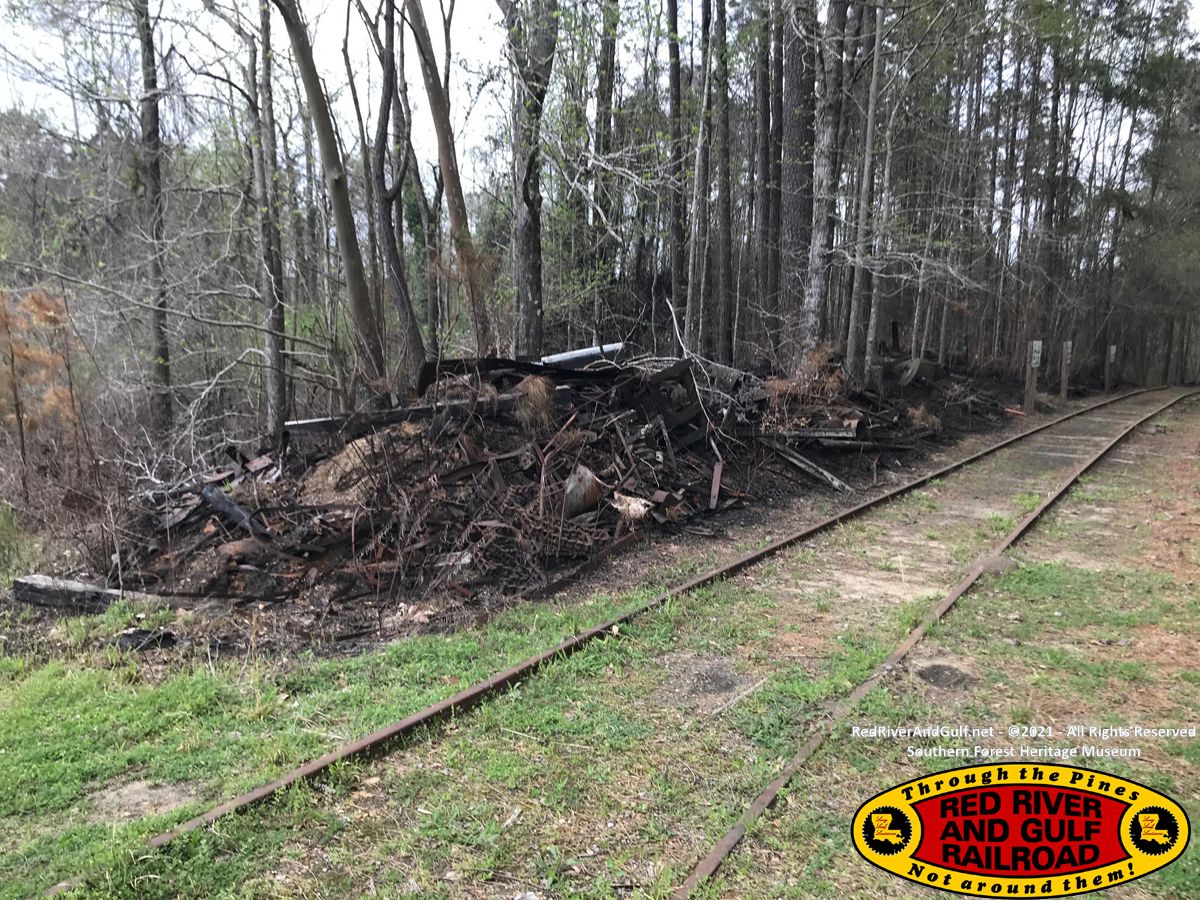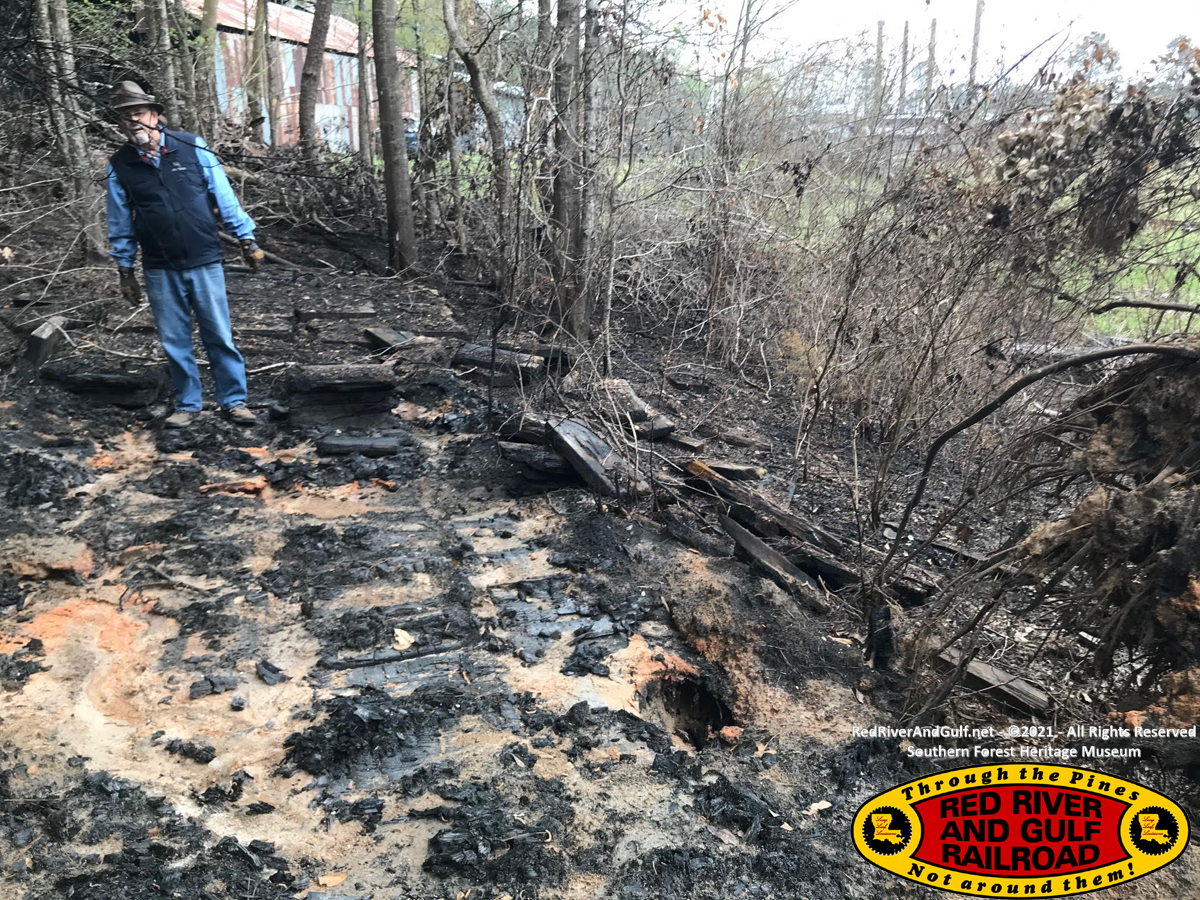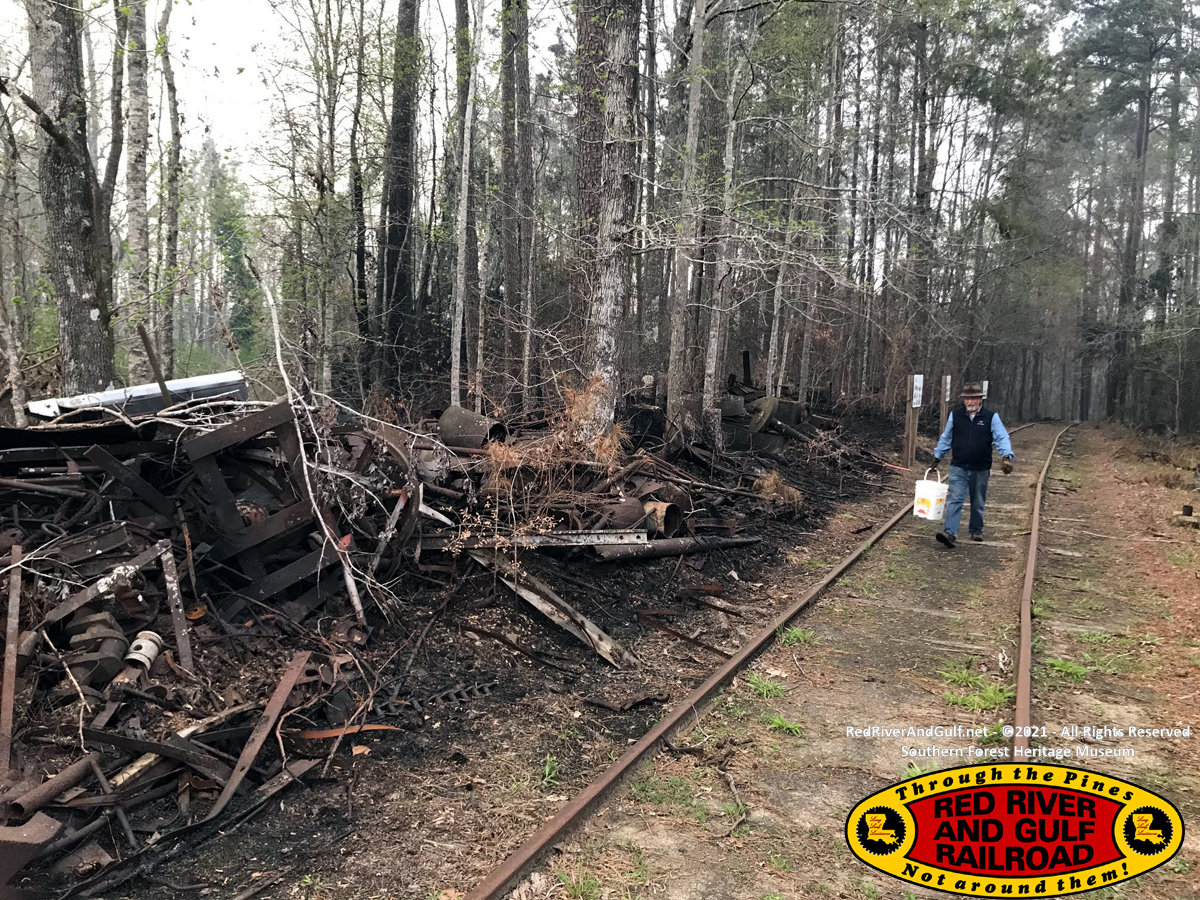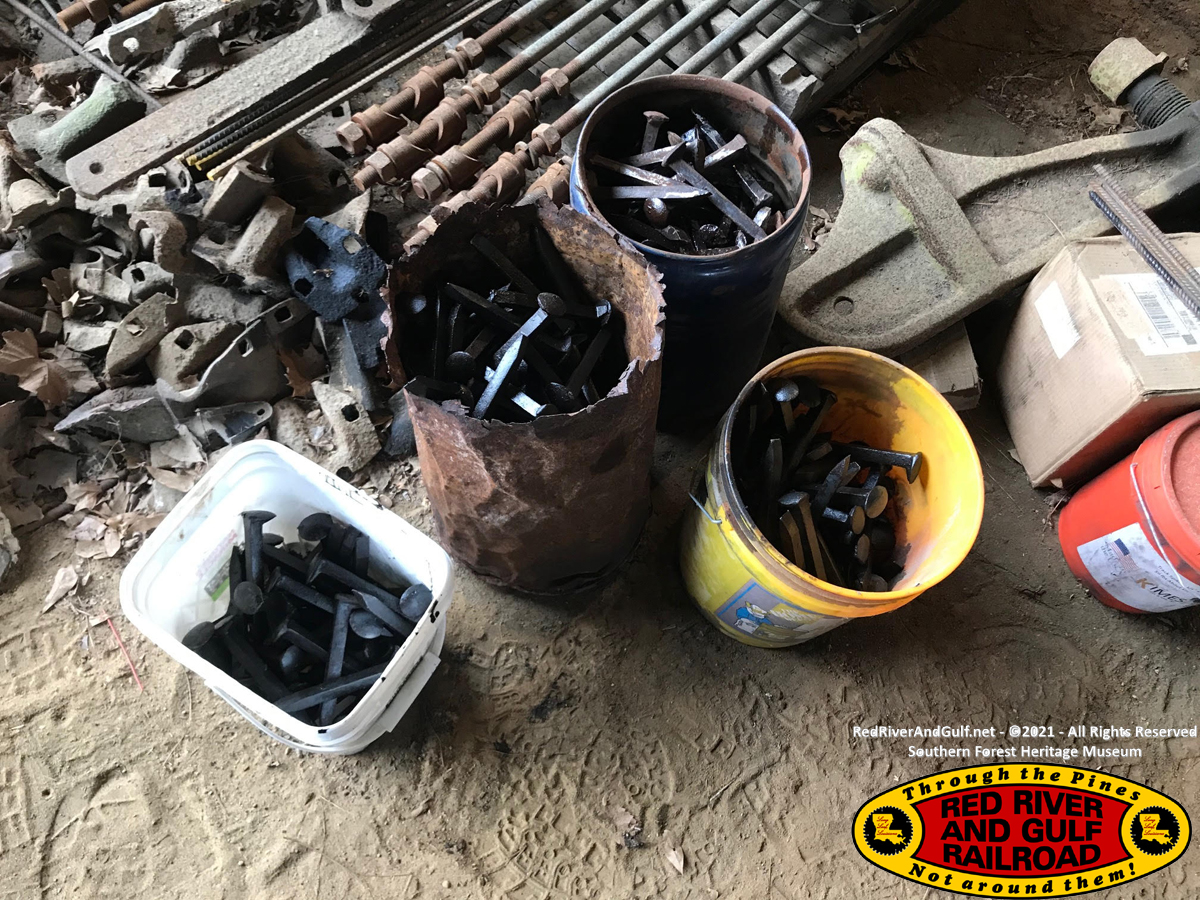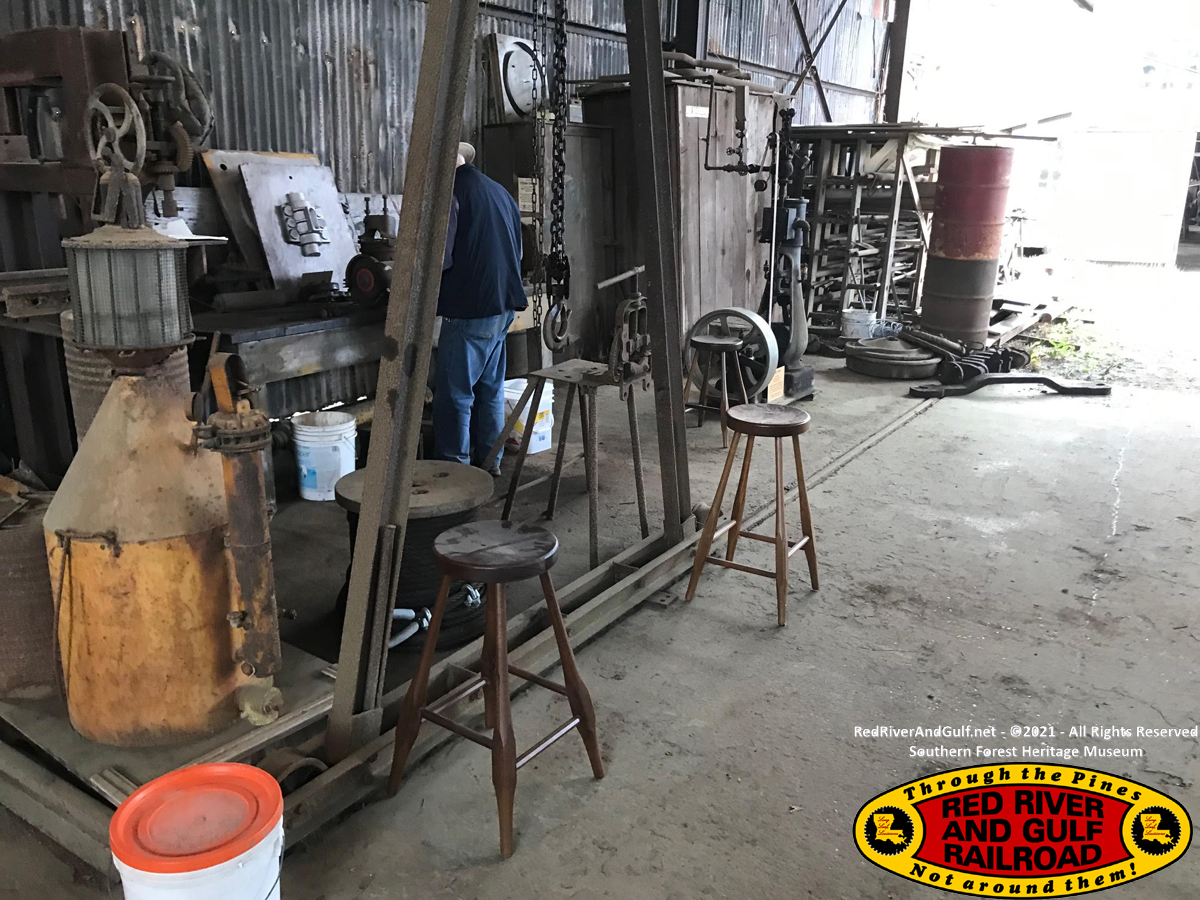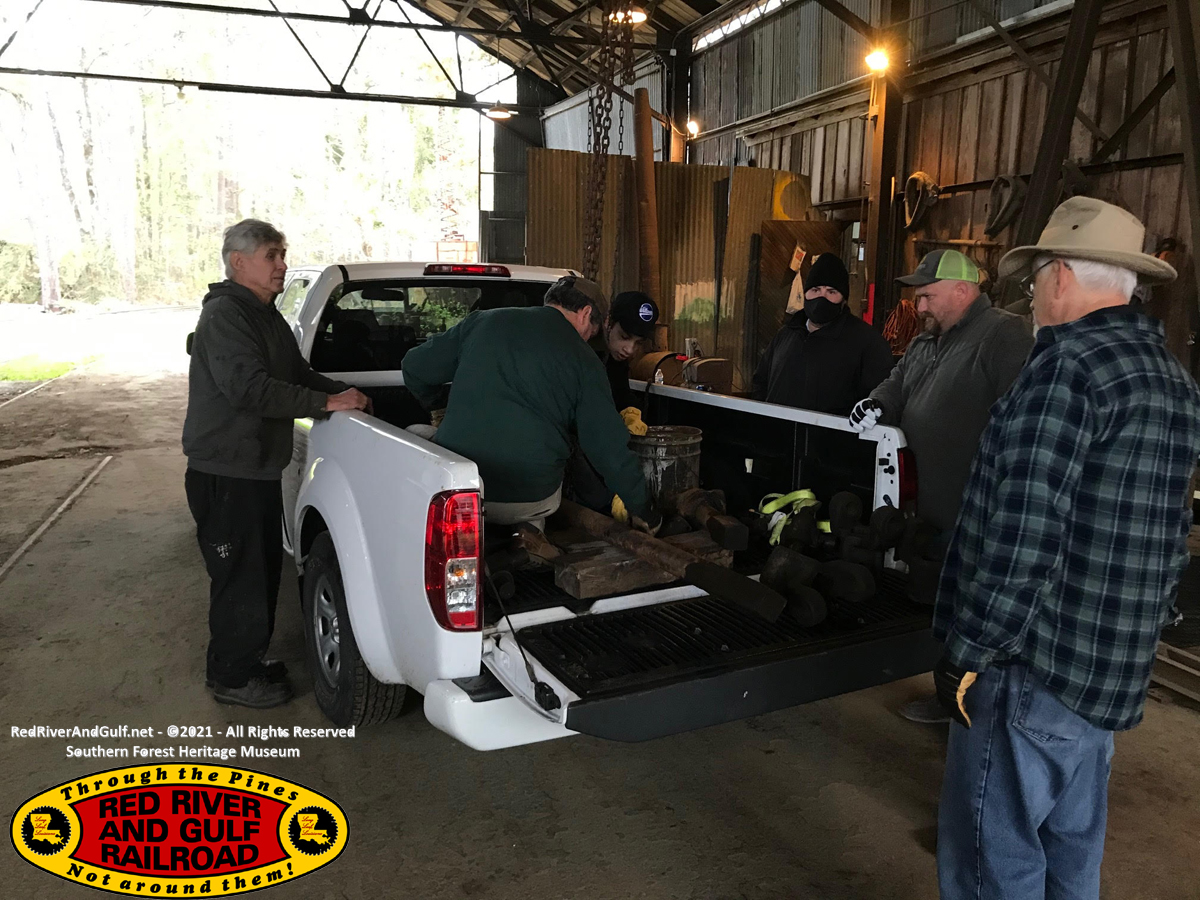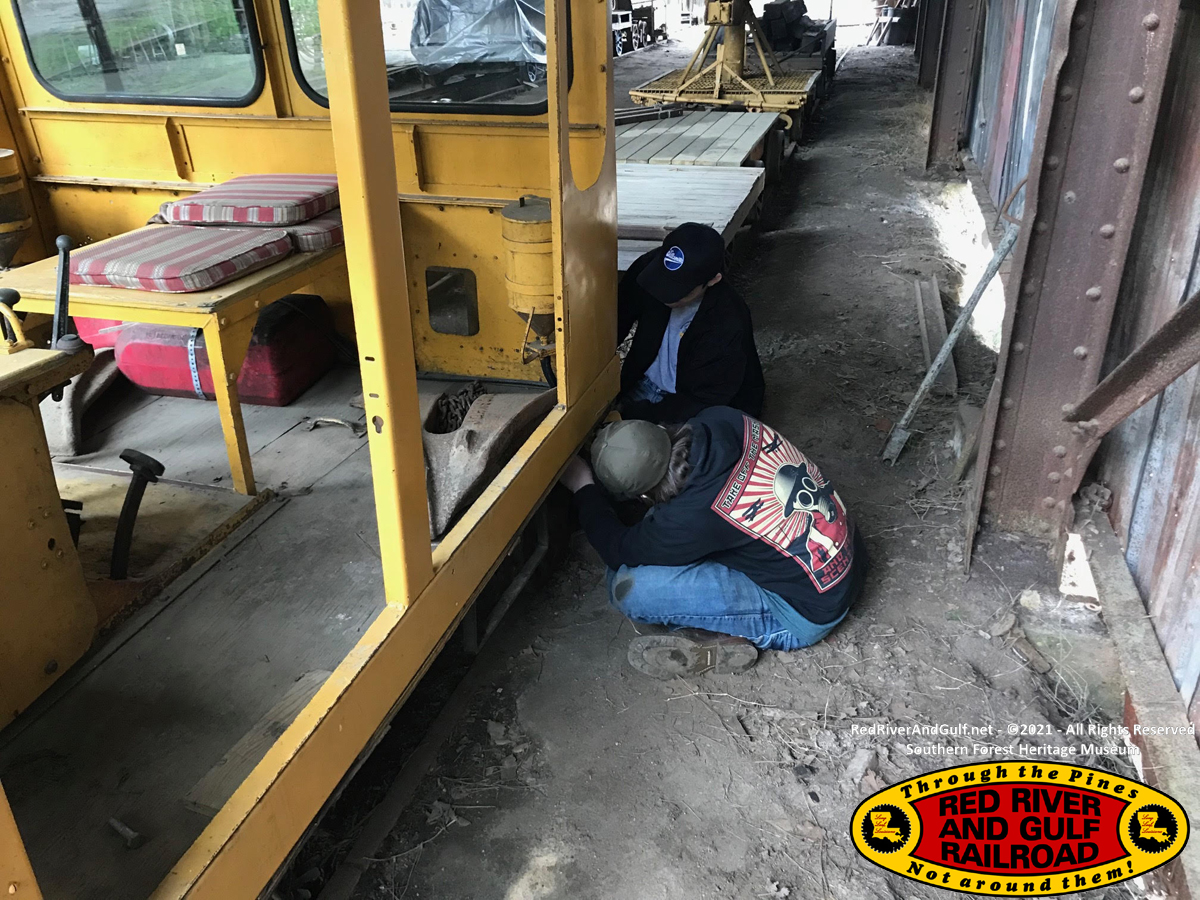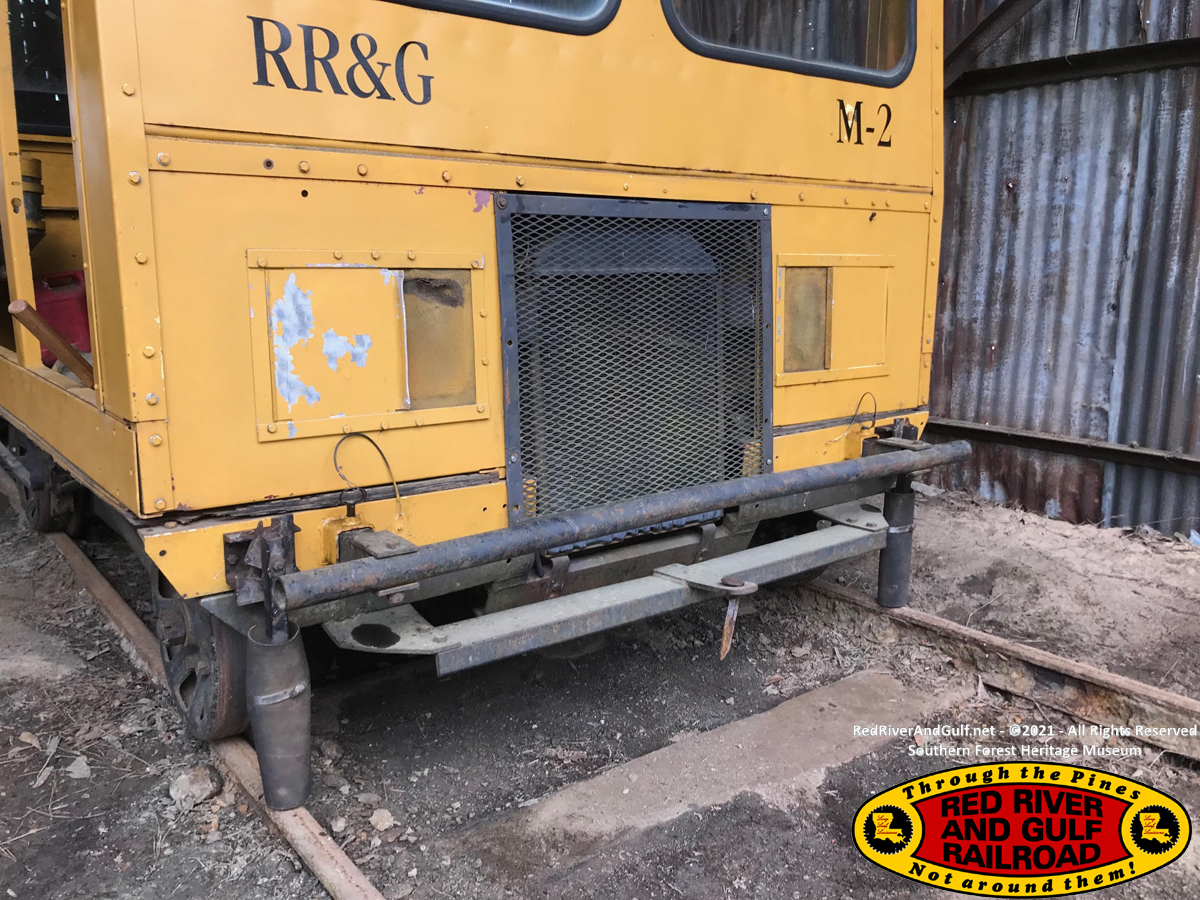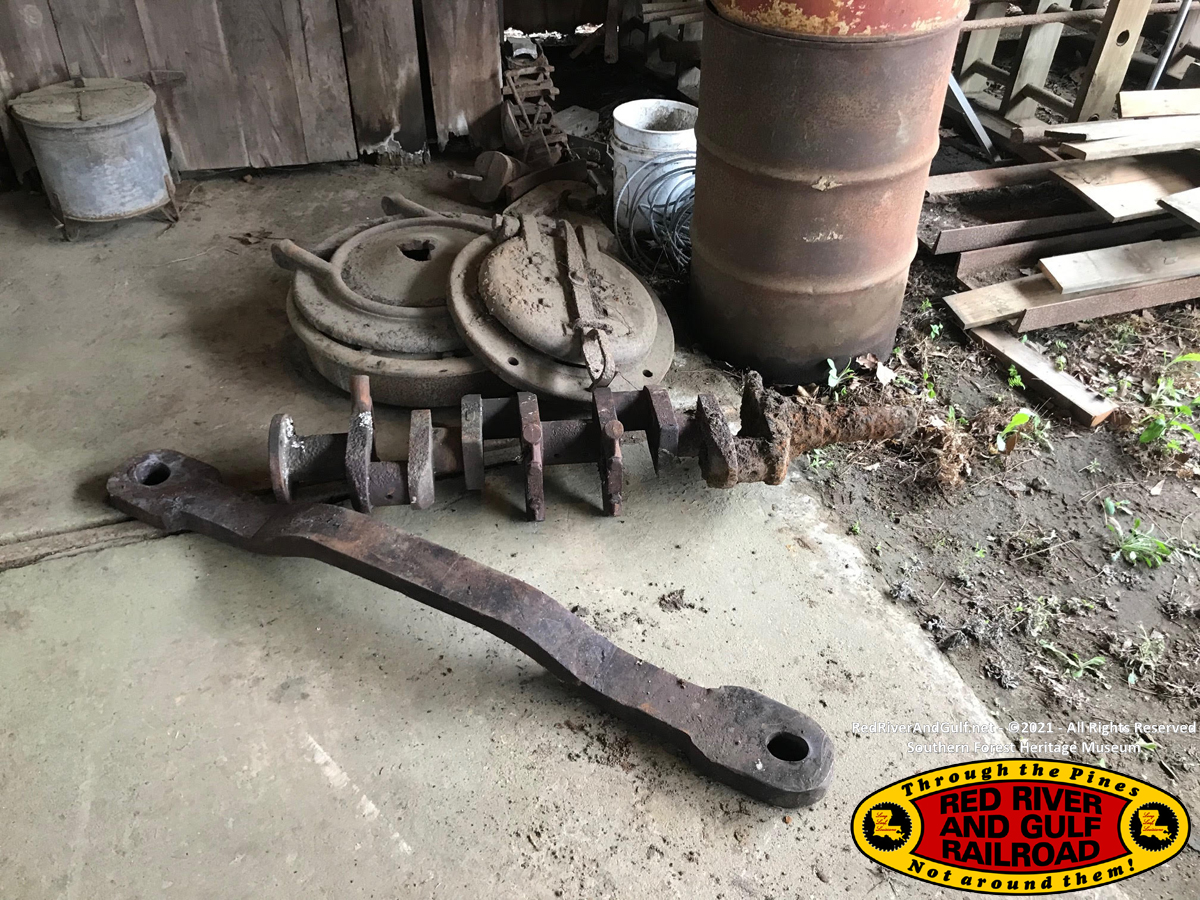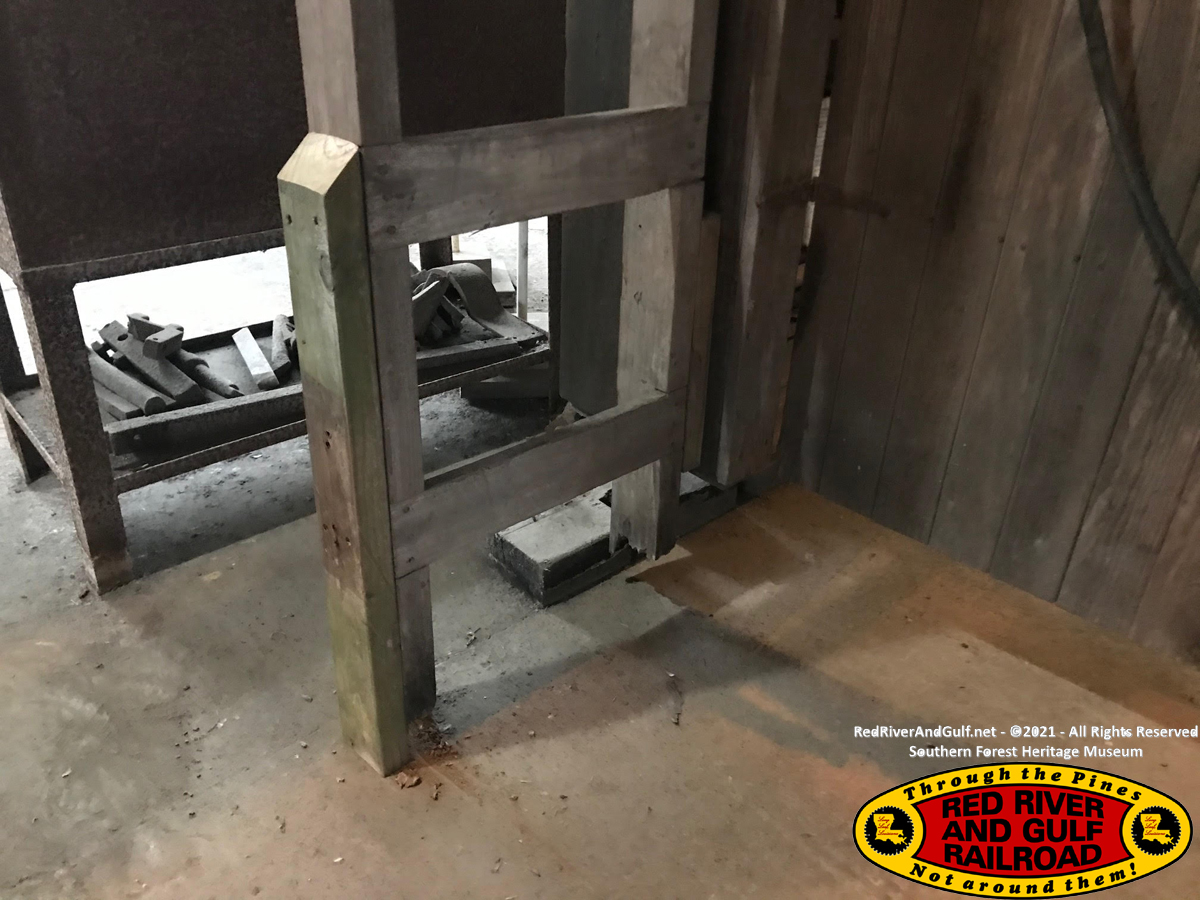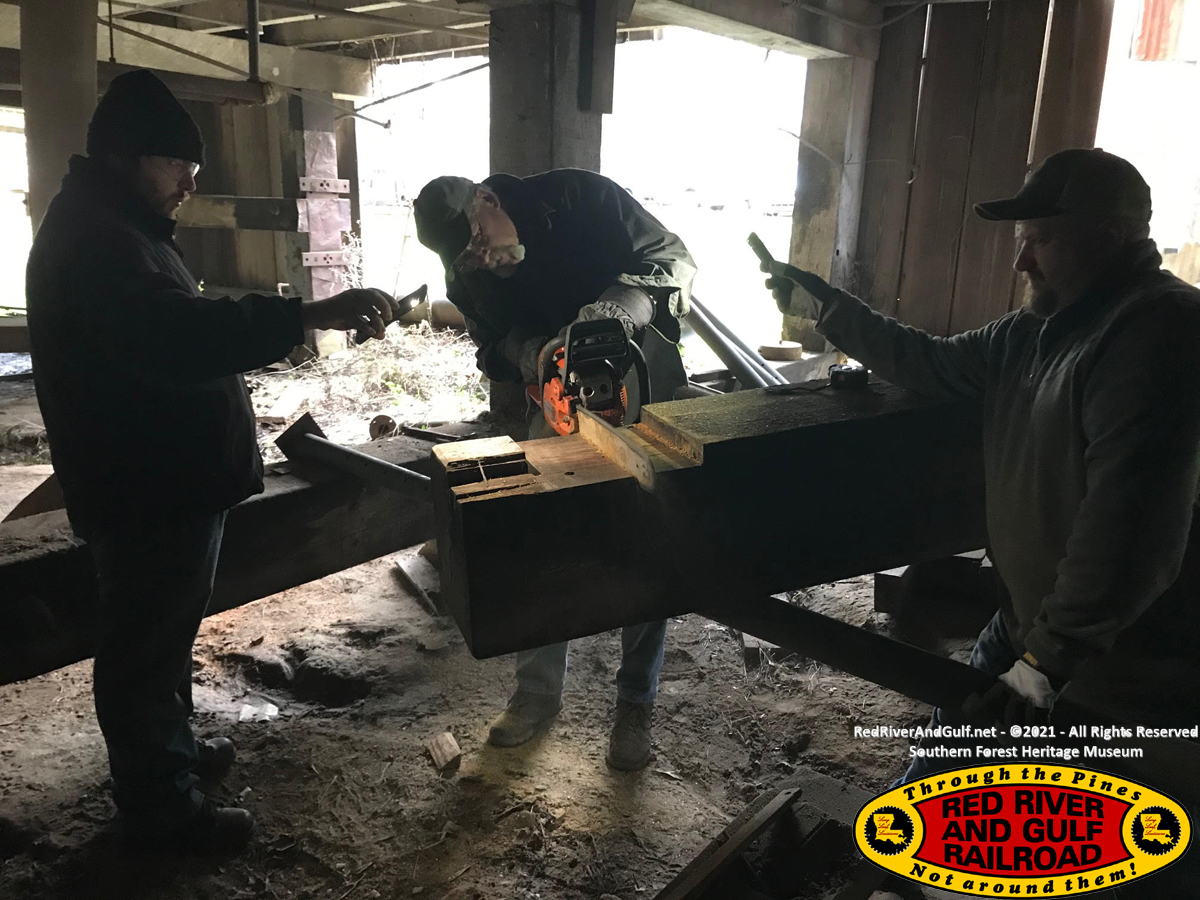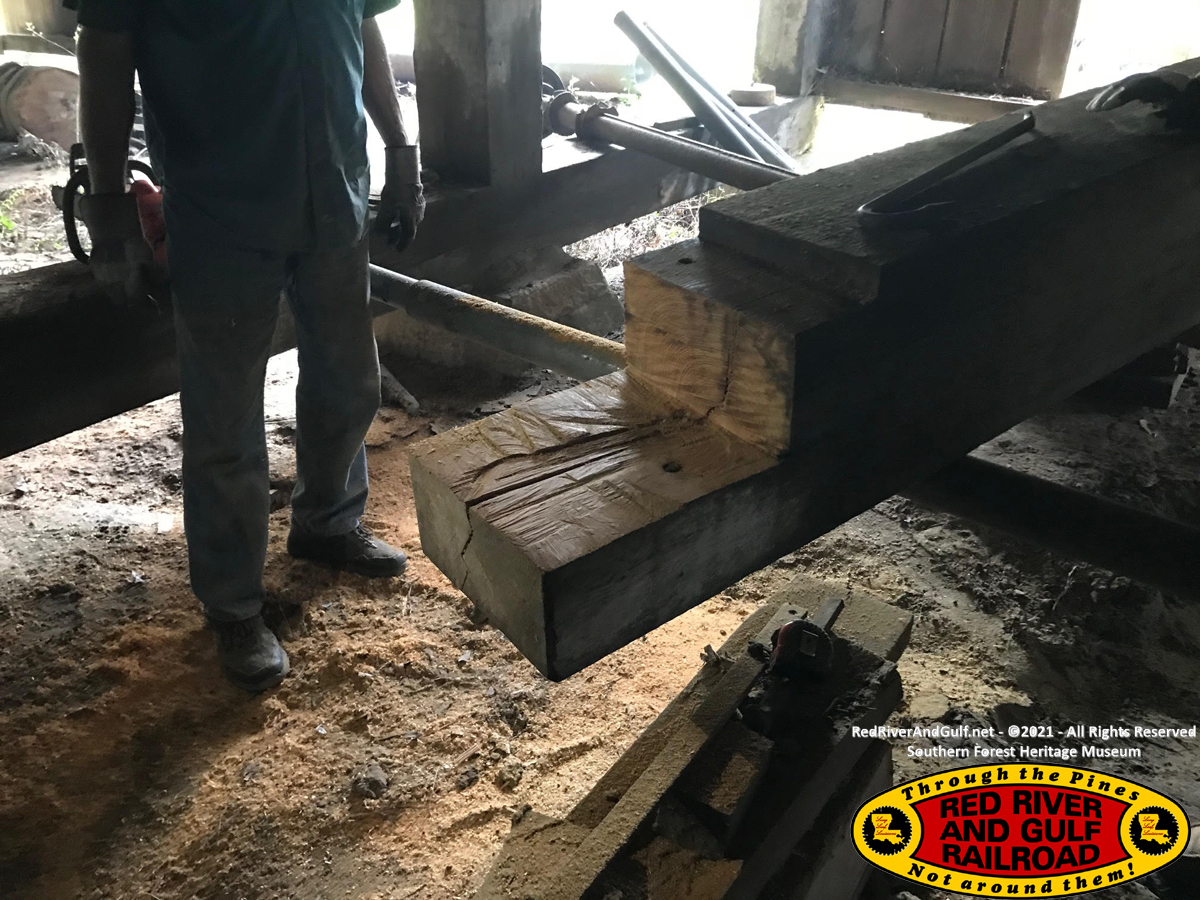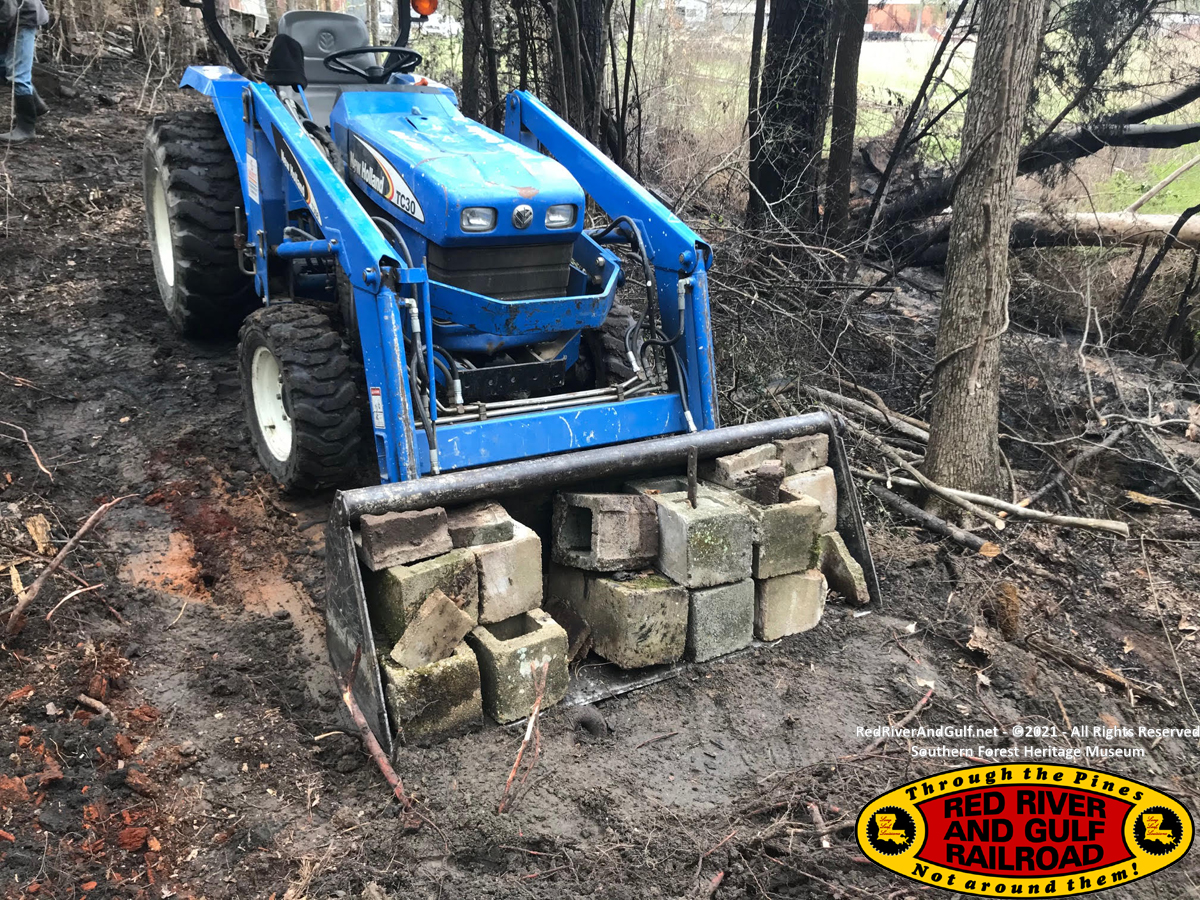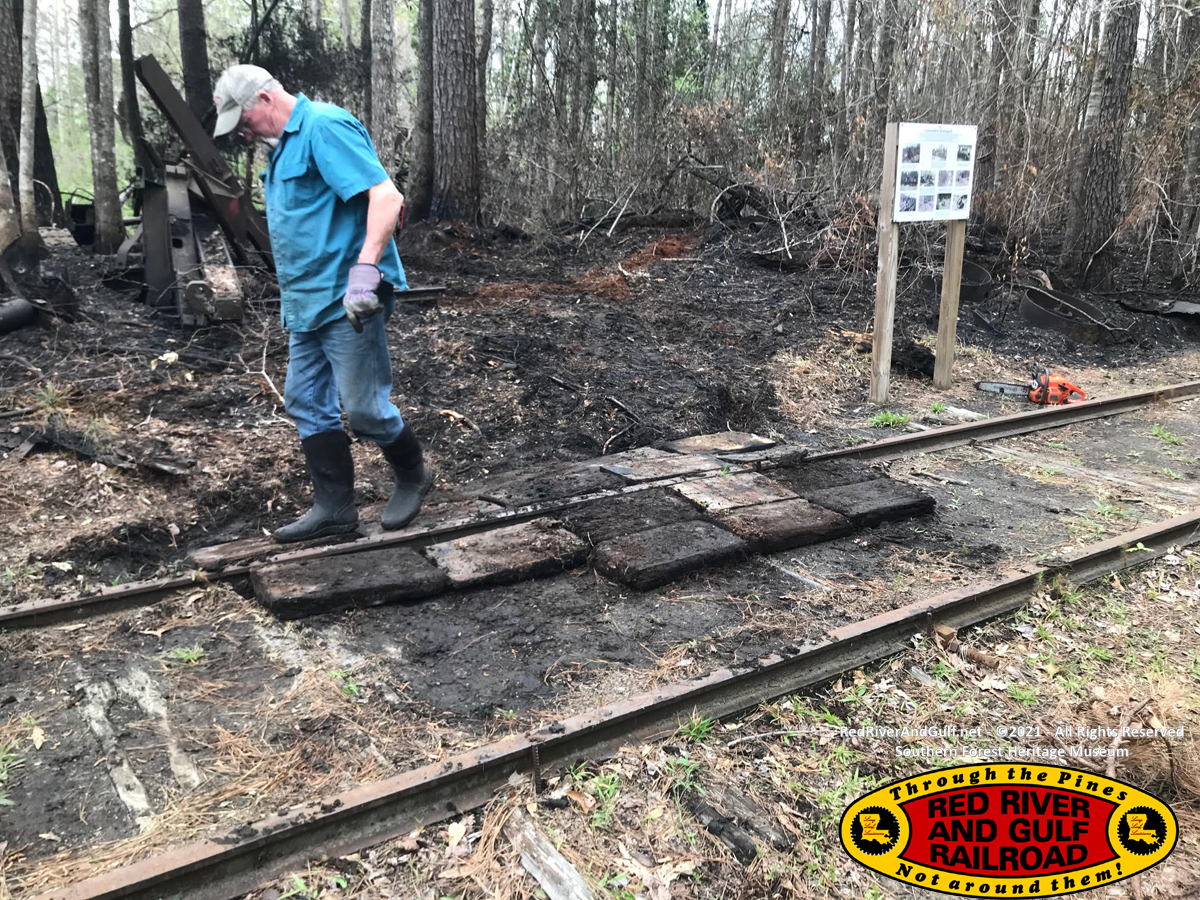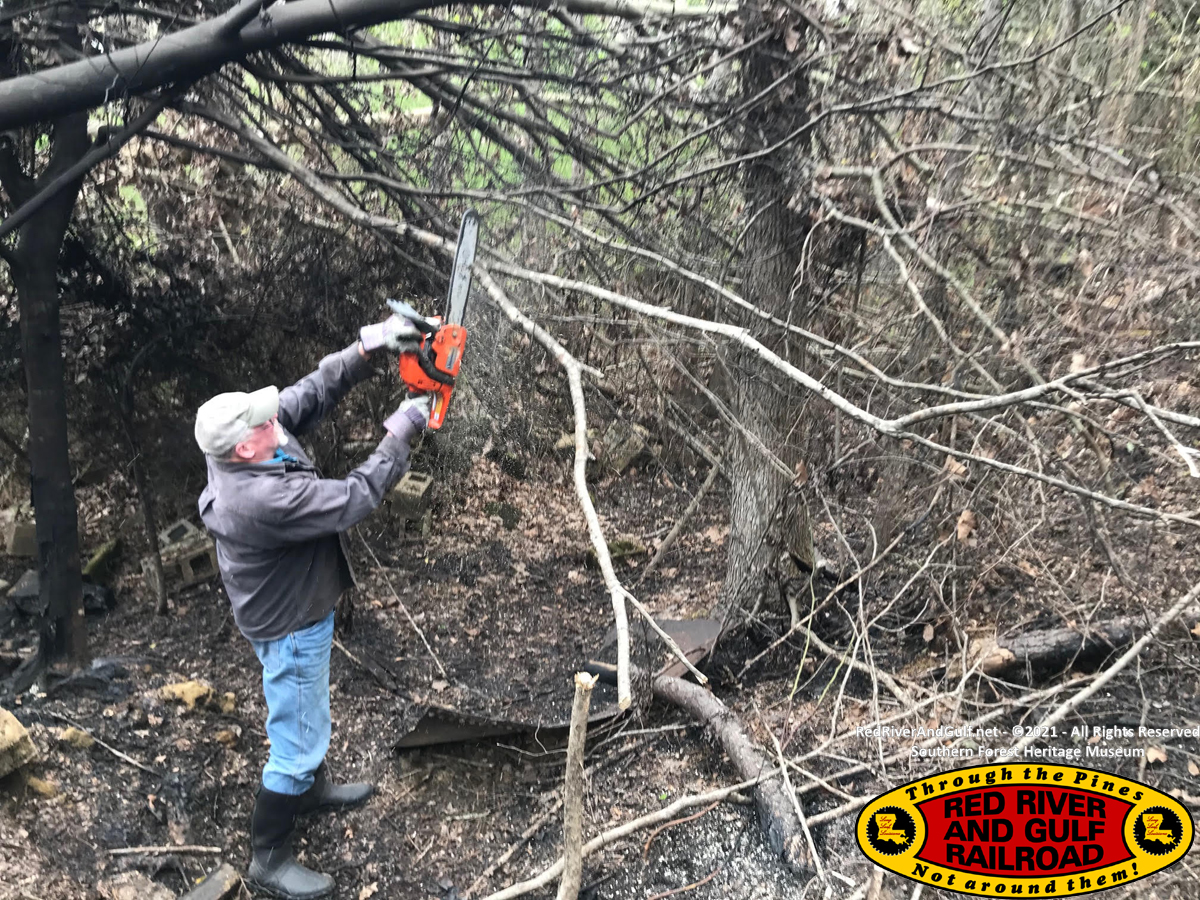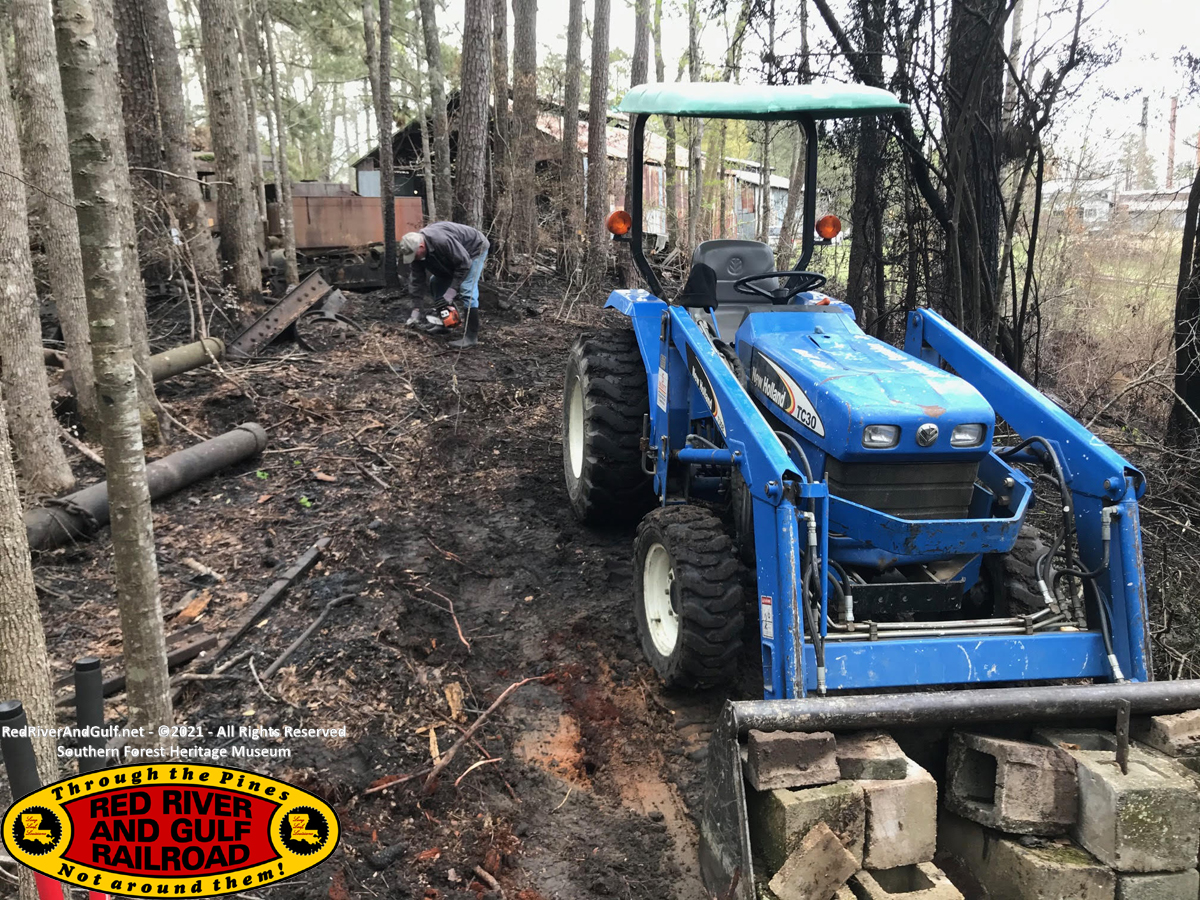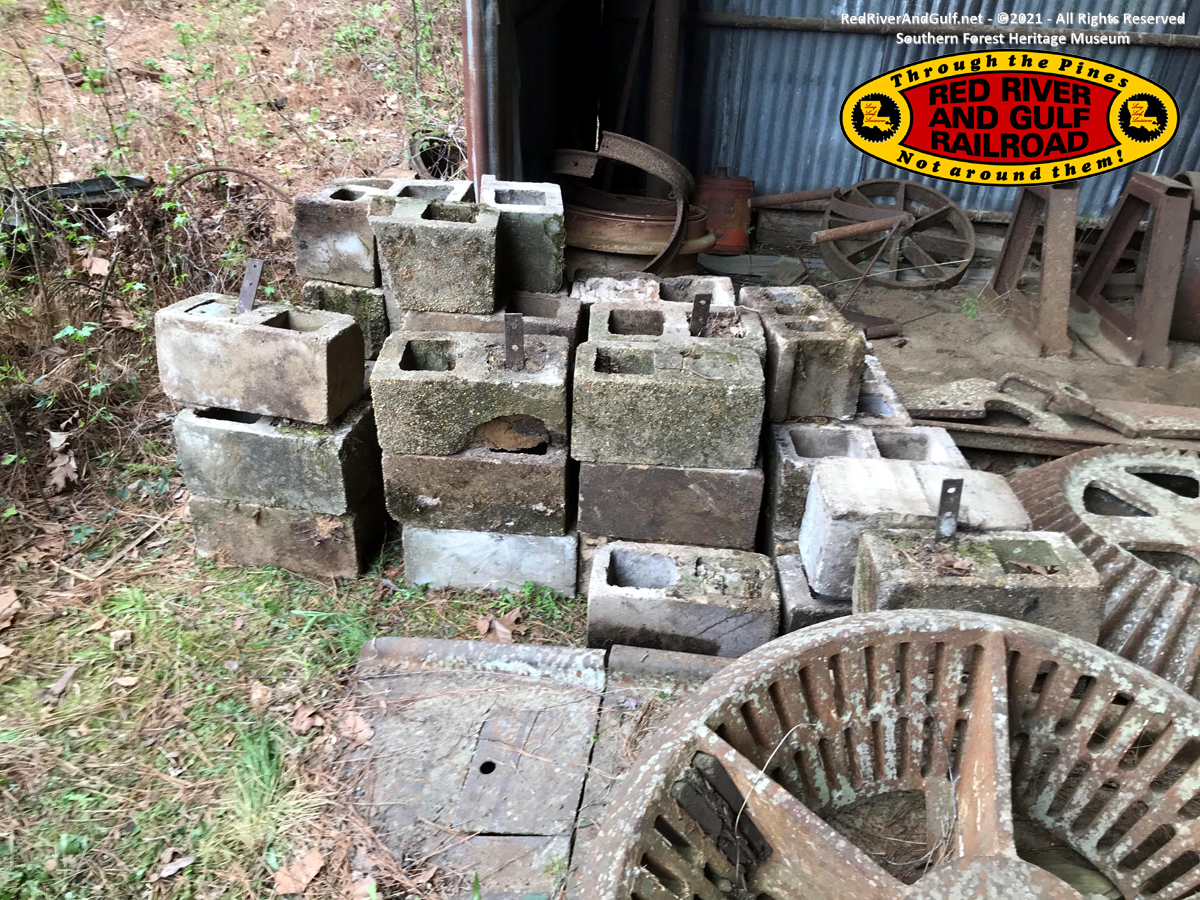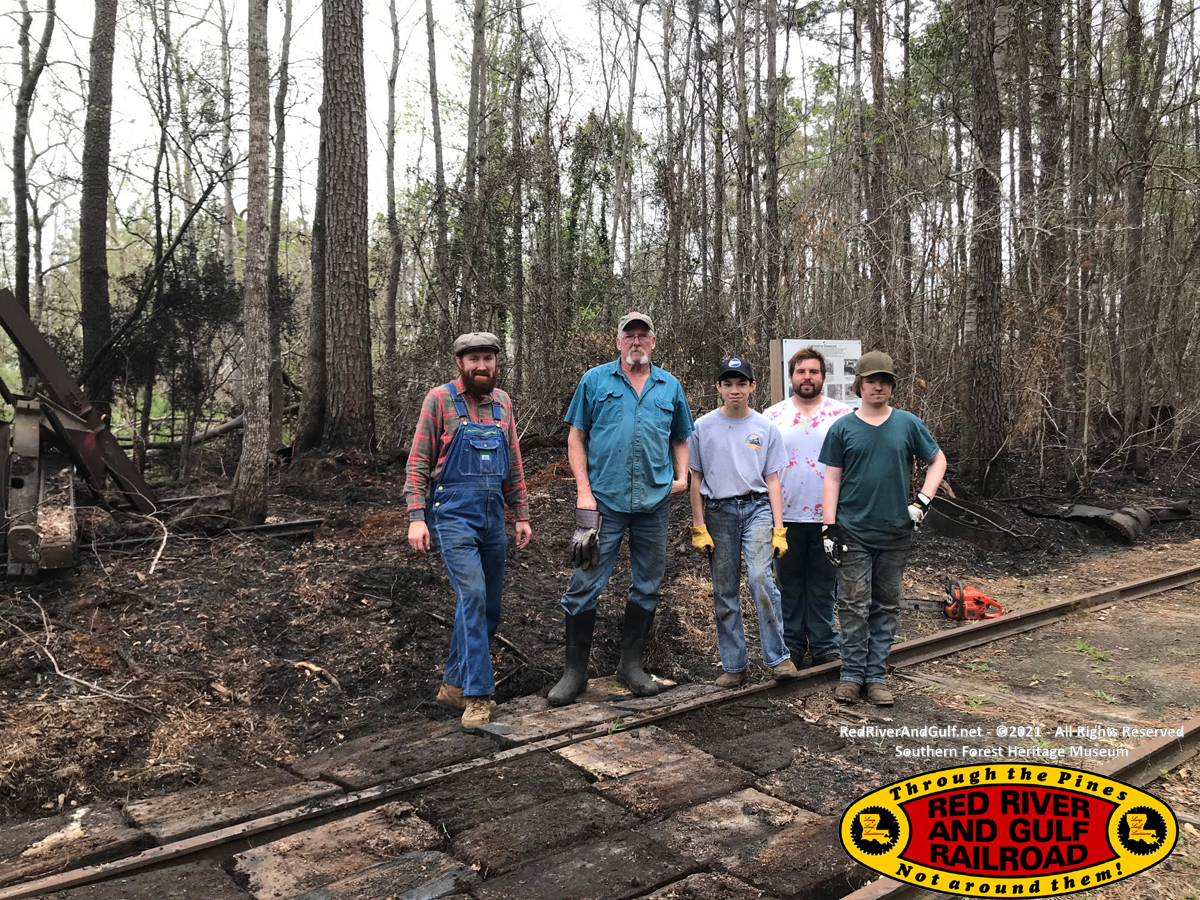|
Team:
Volunteers:
Chuck L.
Laurie L.
Everett L.
Mike M.
Mike B.
Kevin P.
Chris
Carson
Glen A.
Wimbley V.
David H.
Tucker
Domineaux & the Pest Control Staff
Accomplishments:
- New signage installed through sawmill
- Inspection of controlled burn area for parts, equipment, and next
steps
- Oiled machine shop main shaft and counter shafts
- Machine shop main shaft drive belt repaired
- Repaired ladder to chicken walk in machine shop
- Needle scaling locomotive 202
- Sweeps installed on M2
- Accepted donation of spikes and spike mauls
- Accepted donation of stools
- Began recovery of parts from burn area: cement blocks, tender drawbar,
engine crankshaft
Friday
After the board meeting, several board members toured the grounds and
witnessed the great collaboration between museum staff and volunteers on
many projects.
Chuck, Laurie, and Everett
installed new descriptive signage through the Saw Mill to enhance the
visitor experience touring the historic mill. Additionally, Everett and
I spent Friday afternoon going over almost every foot of the controlled
burn area (no track was damaged).
Firstly, thank you to Ed
Robichaux for getting this done. Secondly, it has, as predicted,
uncovered and made available for viewing a trove of artifacts,
equipment, parts, and other items. Below are my observations. Dave,
Mike, and others went through the area.
Some of the scrap metal pile that was burned near locomotive 400 is
recent metal. As in, the metal bands used to wrap bundles of ties are
all recent and can rightly be removed for scrap metal.
Dave Hearne correctly spotted a locomotive tender towbar. We spied what
was perhaps a Shay drive shaft, but upon pulling them out, it appears to
be a diesel engine crankshaft. Both items have been brought to the
Engine House for closer inspection, and potential relocation to a better
location.
Many spikes were found and we brought them back to the Engine House.
Everett cleaned some of them up for re-use back on the track.
The Red River & Gulf - Rock Island crossing diamond is uncovered from
brush for the first time in years. Not sure if it is the Lecompte or
Meridian diamond. But this is a big piece of history. A corner of it has
been cut off. But I'd love to have it out of this area and near the
switch parts for display. It is just a fine piece of railroad
engineering!
Scattered all around the area are McGiffert and Clyde skidder parts. In
fact, we found a completely intact McGiffert tie shoe, the large flat
bar that contacts the ties. It is in really good shape if you ask me. It
is over the scrap pile and down the hill.
There are many locomotive and freight car parts ranging from tender
corners, cast wheels, freight car axles of various sizes, various size
pipes, a meliu of rail sizes, scads of cut or bent rail, tie plates,
chain, skidder boom cuts, skidder cat heads, pulleys, line shaft parts,
flywheels, and tin metal. This is all just in the scrap pile area.
The free tender frame, wheel sets, and trucks by the lower track (planer
mill bypass track) are now finally uncovered and easily visible. There
is still some vegetation down there. The burn was only ground debris in
most areas.
Much of the underbrush was burned out by the Planer Mill switch and the
tank car trucks are visible as well. Excellent job in this area! There
are also countless concrete piers, both loose and some in the ground, in
this area.
Down the hill from the scrap pile, toward the main loop track, was a hot
burn. The large stockpile of block timbers, 1 1/2ft long by 10" wide by
2" thick, burned like a greased candle. I mean this area got HOT.
Fortunately, not all of the blocks burned and many are still usable. We
used some to make a temporary crossing of the track to get the tractor
in and out of the area. Right behind this block pile is a proverbial
gold mine of cement blocks. Not cinder blocks, genuine cement blocks.
Most are intact. And there's almost a hundred of them. These blocks are
useful for numerous projects all over the museum. Everett had a good
idea - these blocks could be potentially used for the drop pit rebuild.
The rotten wood could be removed, cement blocks stacked in, concrete
poured in, and after setting, epoxy could be applied to wood to affix to
the cement blocks, retaining the historic lock of a drop pit. It would
be not just a repair, but an upgrade of the drop pit. We made three
tractor bucket loads of these blocks back to the engine house for
storage and later reuse.
Other general observations:
There are stump holes everywhere. Watch your step.
It is much easier to move around out there. Much easier.
It was really fun exploring out there! But watch out for the water
erosion that has occurred in some spots.
Saturday
Mike B. brought up and donated three full buckets of spikes and some
spike mauls. Thank you Mike! Glen donated some stools for volunteer
comfort in the machine shop and engine house. Thank you Glen! After
unloading the spikes and such from Mike's truck, we made some
introductions, had a quick briefing, and then split up into groups. Crew
#1 of Mike, Mike, and Glen began oiling the main shaft in the machine
shop and replacing the main drive belt back into position. Everett and
Mike also showed Wimbley and Carson how to install the sweeps onto M2,
which Carson and Wimbley did a great job of installing onto our main
maintenance-of-way motorcar. Crew #2 of David, Kevin, Chris, and Tucker
headed down to the Planer Mill to notch the replacement beam. A large
beam has been located and using David's chainsaw, Chris's sharp
measurements, and Kevin's help, the needed notch was cut on the future
replacement beam. This will ensure a good fit when the rotten beam is
removed in the future. Replacing the rotten beam is a major project, but
will ensure stability of the planer mill for years to come.
With the crews reunited at the engine house and machine shop, Mike M.
showed Chris around the Two-Ought-Two and Chris began some needle
scaling on the engine. Years of mud and build up have been removed. Mike
M. and Glen climbed back up on the Machine Shop "chicken walk" to cut
out a portion of a 2x4 that was rubbing up against the main shaft.
Glen's impact wrench and good thinking also noticed and then fixed an
issue on the machine shop ladder. Using a 2x4 and some wood screws,
another board was affixed to keep strong contact with the ground to
prevent the ladder from shaking. Kevin also found some time to grind
some old spikes back into good shape for reuse later.
A hearty lunch of burgers was provided by the museum and good fellowship
was had up at the large conference table at the museum office. After
lunch, Chris, Carson, Wimbley, Glen, and Mike M. continued oiling the
counter shafts at the Machine Shop. This maintenance is very much
needed! Everett and Mike B. took a rail tour of the site while David,
Kevin, and Tucker began clearing a pathway for the tractor to reach the
cement block pile. A temporary crossing was built with additional help
to cross the track near the scrap pile. Three loads of good cement
blocks were hauled out in the tractor and stacked for future use. They
will be put to work in more good projects and upgrades soon. David also
noticed a locomotive tender drawbar - fully intact - in the scrap pile.
We used a chain to pull it and a diesel engine crankshaft out of the
pile for inspection. It was not a Shay locomotive crankshaft, but the
drawbar and it were brought to the Engine House for storage and eventual
placement in a better location.
Kevin and Dave H repaired two
track jacks that were thought to be worn out.
In the later afternoon, I began using the tractor to empty the garbage
cans and haul rotten wood to the burn pile. David found a semi-good
crosstie and he cut a 4ft section needed for the Planer Mill beam
replacement project. I hauled it down to the Planer Mill and then made a
few trips relocating items from the Engine House. Some old fax machines
(I mean really old, made out of metal) and some ornate pots were taken
to the shed behind the new dry kiln in the tractor for more appropriate
storage. A large dymo motor was hauled to the =Saw Mill new powerhouse
where we have a growing collection of small motors there. Chris
continued needle scaling on Two-Ought-Two. Everett oiled some of the
spikes and sorted several of the buckets around the engine house. A work
bench got cleaned off fully and the parts room on the left got a small
clean up and reorganization as well.
Throughout the day, many museum visitors came by the Engine House,
chatted with us, rode the M4, and perhaps even a few new volunteers were
recruited as well. There were even a few cat sightings up at the finish
lumber shed - much to everyone's enjoyment.
It was a full day and a great day! And dang it was fun! Thank you to
everyone who came out.
-Tucker Baker
RR&G Road Master
|
